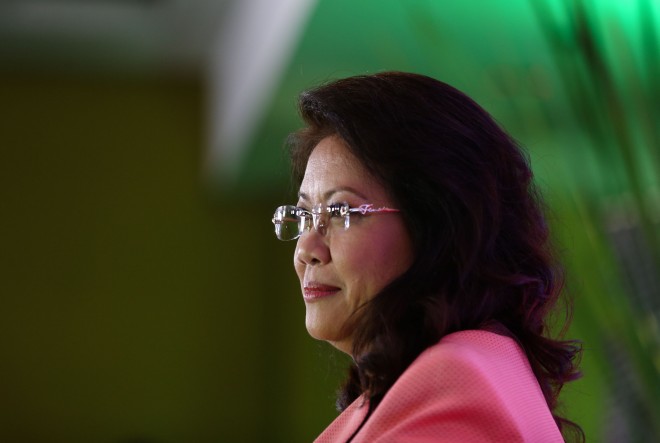Chief Justice Maria Lourdes Sereno has maintained that there was conspiracy between former President Gloria Macapagal-Arroyo and officials of the Philippine Charity Sweepstakes Office (PCSO) in the misuse of intelligence funds of PCSO amounting to P366 million.
In her dissenting opinion, Sereno said that the court’s majority decision dismissing for lack of evidence the plunder charges against Arroyo, now a Pampanga representative, ignored the “stark irregularities” in the disbursements of
PCSO confidential intelligence funds (CIF) and budget ceilings “by the practice of commingling of funds.”
She said the decision also ignored the report to the Commission on Audit of a coaccused, PCSO budget officer Benigno Aguas, who admitted that P244 million of nearly P366 million in intelligence funds of PCSO had been diverted to the Office of the President.
“The conspiracy is thus sufficiently shown through the repeated approvals of Arroyo of additional CIF requests in the course of three years,” said Sereno. She said the court failed to see as proof the irregularities in the disbursement, accounting and liquidation of the funds and the active participation of the accused in the subject intelligence funds of the PCSO.
She said the release of PCSO funds was not possible without Arroyo’s approval. “The funds could not have been disbursed without the complicity and overt act of Aguas.”
Sereno said the then PCSO general manager, Rosario Uriarte, “was definitely part of the scheme.”
Three other justices dissented—Estela Perlas-Bernabe, Antonio Carpio and Marvic Leonen.
Bernabe opinion
In her dissenting opinion, Bernabe voted to absolve Arroyo, but not Aguas.
She said the “OK” notations of Arroyo on Uriarte’s order for release of intelligence funds did not “sufficiently prove that she assented to or committed any irregularity so as to facilitate the criminal design.”
But Bernabe raised strong objection to the majority vote that the crime of plunder can be established only if the accused personally benefited from the funds.
She raised the issue of the massive misuse of the Priority Development Assistance Fund (PDAF) by businesswoman Janet Lim-Napoles and several senators.
“Unfortunately, the majority has imposed a rule which now requires the state to submit direct proof of personal benefits for an accused plunderer, as well as those who have conspired with him to be convicted,” Bernabe said.
‘Highly intelligent’
Bernabe said such approach could have an impact on the PDAF controversy “now under current litigations” because the stolen money were hidden through “ingenuous schemes and means.”
“The majority’s interpretation (of plunder) tends to enervate the potency of the plunder law’s force,” she said.
In his 48-page dissent, Leonen said Arroyo was a “highly intelligent and experienced President who served an extraordinary term of nine years” that she could not have detected a “pilferage of the public coffers.”
Leonen, who along with Sereno and Bernabe was an Aquino appointee to the Supreme Court, also emphasized that evidence showed Arroyo conspired with Uriarte and Aguas.
“A total of P365,997,915.00 was disbursed in cash as additional confidential and intelligence fund from the PCSO. Where it went and why it was disbursed was not fully explained. It is clear that the cash was taken out by the general manager and the chair of the PCSO among others,” Leonen said.
“The general manager had intimate access to the President herself. She bypassed layers of supervision over the PCSO. The approvals were in increasing amounts and each one violation established financial controls. The former President cannot plead naivete. She was intelligent and was experienced. The scheme is plain except to those who refuse to see,” Leonen said. TVJ
RELATED STORIES
No conspiracy, 11 justices say as Arroyo finally comes home
Arroyo walks free after 4 yrs of hospital detention
